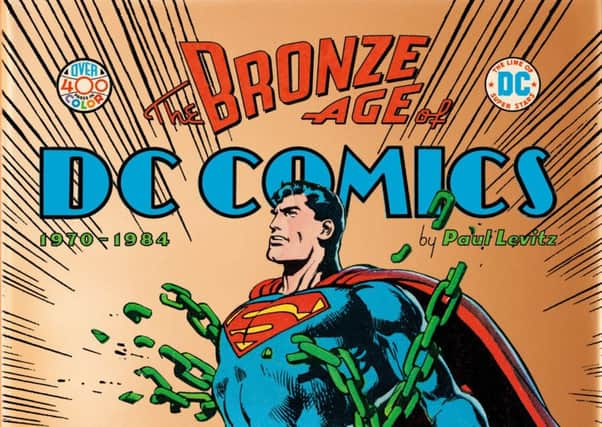Book review: The Bronze Age of DC Comics by Paul Levitz


The Bronze Age of DC Comics by Paul Levitz | Taschen, 416pp, £34.99
The Bronze Age of comics was my time. It was when I was most avidly collecting the titles of Marvel and, even more so, DC Comics. It was a period of change, as the staid heroes of the Sixties were confronted by social turmoil. Wonder Woman lost her powers and embraced Women’s Lib. Batman set up a project to help victims of crime. Robin went from Boy to Teen Wonder as college came a-calling. Green Arrow went on a road trip to discover the “real” America and learnt his sidekick (the unfortunately named Speedy) was a junkie. Superman lost the strength to juggle planets as he worried about more down-to-Earth problems. Lois Lane investigated racial discrimination by having a machine turn her Black for the day...
Advertisement
Hide Ad... well, DC may have been embracing “relevancy”, but fantasy was still its bread and butter. And it stood them in good stead when, despite attention and awards, that superheroic Easy Rider didn’t stop the Green Lantern/Green Arrow book being cancelled due to low sales.
It wasn’t all superheroes, though, as fan turned writer turned president of DC Comics Paul Levitz details in this coffee table book. “Lavishly illustrated” doesn’t begin to describe a volume dripping with gorgeous illustrations by the likes of Nick Cardy, Neal Adams and Alex Toth. As well as the super-folk, these masters turned their craft to DC’s horror, western and war books, which survived through to the end of the Bronze Age in the mid-Eighties (Levitz has produced earlier volumes on the Golden Age of the Thirties, Forties and Fifties, and the Silver Age that followed).
There’s an interview with writer Denny O’Neil – who pretty much invented relevancy with Adams, an artist who threw out the rule book when it came to realism and page design – and anecdotes and insight aplenty, but really, the big draw is the art (no pun intended). Covers, panels, process images, rarely seen novelties – even if you’re not a comics fan, you’ll pore over this for hours, taking in the trivia as you admire the visuals.
Levitz, who left his day job in 2009 but still writes comics, takes us from 1970, when tyros with new ideas were replacing the old guard they admired, to 1984, when DC’s in-house continuity was considered so convoluted and complicated that the universe – nay, the Multiverse! – was about to be rewritten via the year-long Crisis on Infinite Earths series. But that’s a story for another day.
Today, all you have to do is enjoy this nostalgic treasure trove, a tribute to a generation of comics creators living through – and perhaps even affecting – social change.